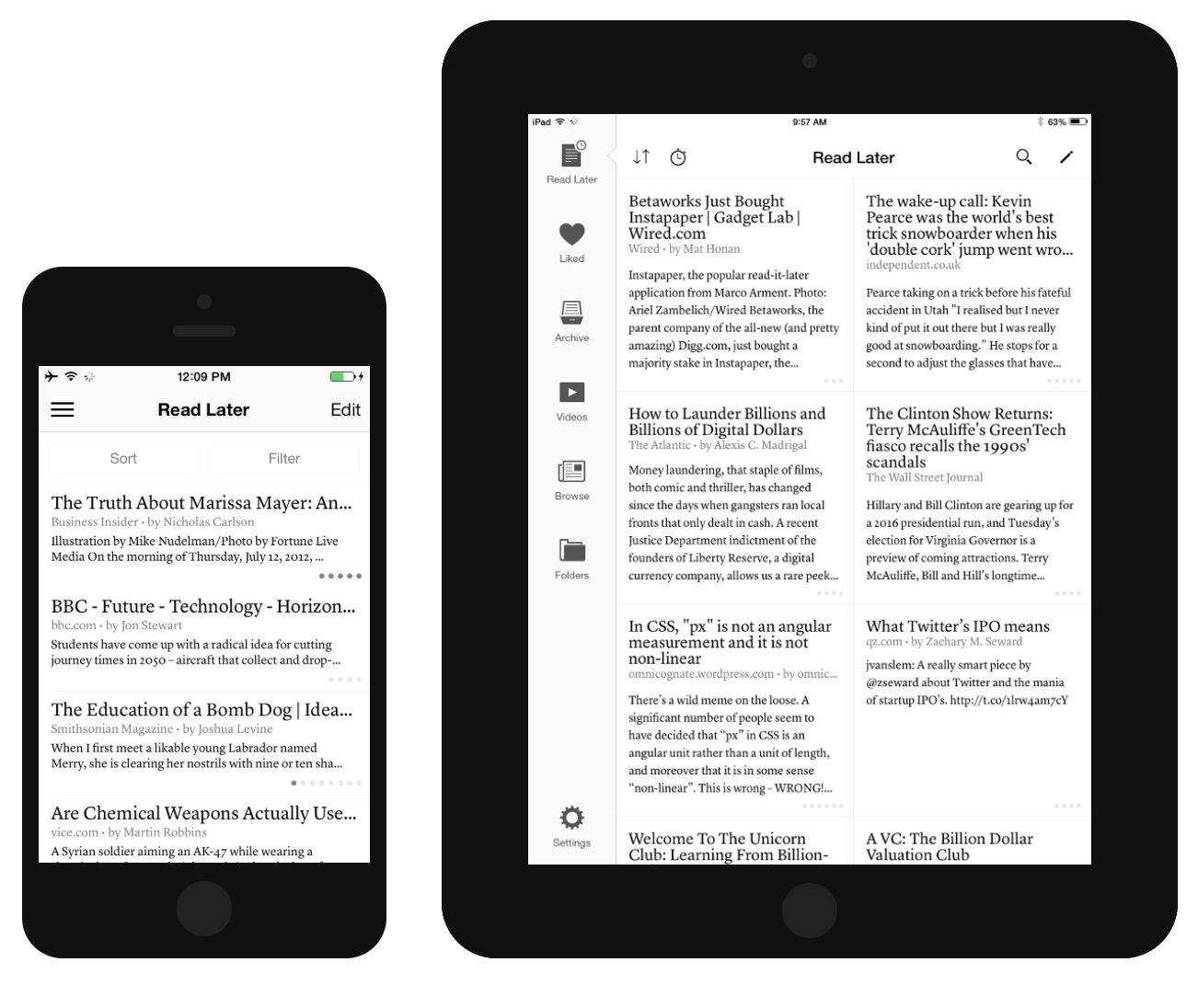
Instapaper makes it possible for one to save any material from the internet and read it later. The technology applied by this tool formats the saved material in such a manner that a user can access it from anywhere and at any time, regardless of whether one is online or not. This tool offers a user the easiest way to save and store reading materials from the internet for the future use.
#Instapaper google chrome android
Instapaper is a simple web based tool that allows a user to save links to web pages on devices such as iPhone, iPad, Kindle, and Android devices (Sparks, 2011). Fortunately for students and teachers experiencing this problem, there is no need to suffer any more because Instapaper is developed to solve the problem. They often use the internet when developing their term papers, sourcing for additional course materials, and socializing with other users. Remember, it's not what you read, it's what you ignore.This is common among teachers and students, who constitute the largest group of people that uses the internet on a regular basis. RSS feeds are great, don't get me wrong, but they also contain plenty of material that I'm not interested in reading. The advantage of this two-step process is that my Pocket reading list only contains content that I've actively put there. This is the main idea behind managing my reading list: I'm separating the process of choosing what to read from actually reading it. I can now simply skim through all new posts and choose which ones I want to read later. This shows a little icon in the upper right-hand corner, which sends the article to Pocket when clicked: Now, I have configured Feedly to use Pocket as my favorite reading tool. After Google Reader died in mid-2013, I imported all my feeds into Feedly, which I've been using ever since. That makes for a lot of content that's swept towards me. Let me now give you a quick rundown on how I use it in combination with Feedly and other services.Ĭurrently, I've subscribed to about 35 RSS feeds. So far, I've talked about why I chose Pocket over Instapaper. Like this, I can simply pick up my iPad and continue to read where I left off on my desktop.
#Instapaper google chrome archive
Oftentimes, I remember having read a blog post about a certain topic, which I'm able to quickly pull out of my archive like this. I like being able to search through my entire archive.Not so with Pocket: The extension asks for your credentials once and then stores them, but not using cookies. Since I've configured Chrome to delete all browsing data (including cookies) when closing the last tab, I had to re-login to Instapaper every browser session.
#Instapaper google chrome code
Some blog posts include source code in a format that isn't always displayed correctly in the text-only view, sometimes not at all.Īnother good thing is the Pocket browser extension for Google Chrome.

The thing I like best about Pocket is the possibility to not only download the text version of an article for later offline use, but also the original HTML view.

I was happy with it - until I took a look at Pocket, which I like even better. Also, there are apps available for both iPhone and iPad, which I mostly use for reading. Instapaper's web interface is organized, its reading view is clean, and the "Read Later" bookmarklet works nicely. Up until recently, I've been using Instapaper to keep track of blog posts (and other text material) that I intend to read later. Managing My Reading List with Feedly & Pocket January 28, 2014


 0 kommentar(er)
0 kommentar(er)
